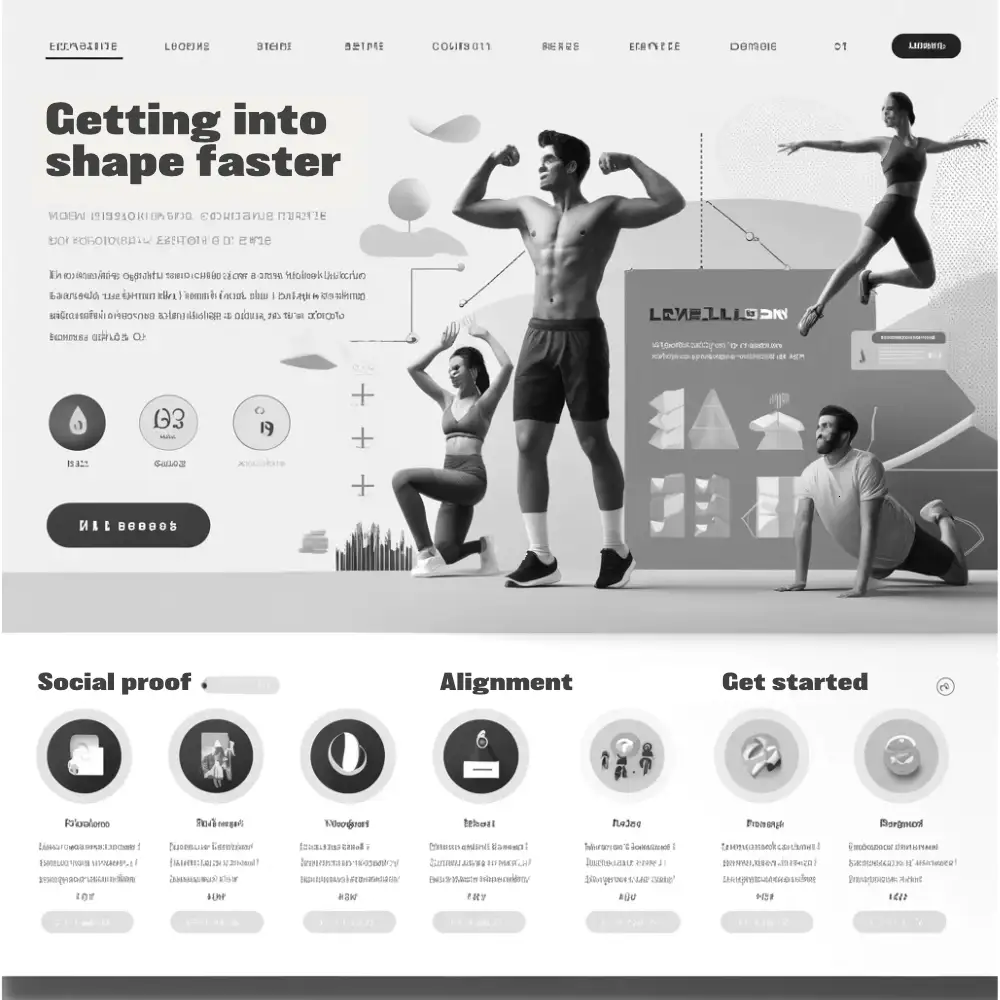How To Set Up A Landing Page Test To Validate Your Business Idea
Updated on May 25, 2024 by Tim Donahue
As an entrepreneur, validating your business idea before you fully commit all your time, money and energy resources is crucial.
Traditional methods like surveys and market research interviews can provide some insights, but they fall short in predicting actual purchasing behavior. You don’t really know whether people will purchase from you unless they get a chance to spend their money.
This is where the Landing Page Test comes in—a more reliable method to gauge genuine customer interest and potential demand.
What is the Landing Page Test?
The Landing Page Test involves creating a simulated online shopping experience to measure how many potential customers are interested in buying your product. It provides a realistic scenario where customers can engage with your product just as they would on a live e-commerce site.
How does a the Landing Page Test work?
Broadly, you set up a professional looking website, page called a landing page that shows off your product or service whether it exist in the real world or not. You may need to mock up images of your product or create diagrams, showing how your service works, etc. so that people assume that it is purchasable right now. Note! This is a core in critical component of the landing page test – the users need to believe that they can purchase from you.
Once you have a legitimate, looking, landing, page set up, you drive traffic to your landing page normally via Facebook ads. Presumably users are driven to your page and then we are measuring their behaviors to help gauge their interest in your product. Once you have a legitimate, looking, landing, page set up, you drive traffic to your landing page normally via Facebook ads. Presumably users are driven to your page and then we are measuring their behaviors to help gauge their interest in your product.
We measure several different things each of which gives us even further insight into the level of customer interest in your new business.
- how many clicks did we get off of the ad
- how long did people spend on your landing page looking at it
- did people click the “Get More Info” button on your landing page?
- Once they click “Get More Info” they are taken to a product details page with an add to cart button in a price on it. How many people clicked the add to cart button?
- And finally, how many people clicked the checkout button in an attempt to check out and pay for your product?
Here’s the rub: how can they buy a product that doesn’t actually exit yet?
Steps to Implement a Landing Page Test
- Design a Professional Landing Page
Start by creating an attractive, professional-looking landing page. This page should feature high-quality images or 3D renderings of your product. If real photos aren’t available, hiring a 3D artist can be a cost-effective alternative. For example, showcase a sleek countertop appliance and its usage with compelling visuals. Include a “More Details” button to encourage further engagement. - Develop a Detailed Product Page
The “More Details” button leads to a product description page. Here, provide in-depth information about your product, including its features, benefits, pricing, and warranty details. Use a format similar to established e-commerce sites, such as this example. This page should also include an “Add to Cart” button. - Simulate the Checkout Process
When visitors click the “Add to Cart” button and proceed to checkout, display a message stating that the product is under development and will be available soon. Offer an incentive, like a 50% discount, for providing their email address to receive updates and the discount once the product is ready. - Set Up Facebook Ads to Drive Traffic
Use Facebook Ads Manager to create ads that drive traffic to your landing page. Ensure that your ads are well-targeted and visually appealing. You can use various ad formats like carousel ads, video ads, or dynamic product ads to attract your audience. Here are some tips for running a low-cost Facebook ad campaign:- Set a Modest Budget: Allocate a small daily budget, such as $5-$10 per day, to keep costs low while still reaching a significant number of potential customers.
- Target Your Audience: Use Facebook’s detailed targeting options to reach the right audience. Focus on demographics, interests, and behaviors that align with your product.
- A/B Testing: Implement A/B testing to compare different versions of your landing page or ad creatives. For instance, you can test different headlines, images, or CTA buttons to see which version performs better. Utilize Facebook’s Experiments tool to manage and monitor these tests effectively.
- Analyze Results
Monitor key performance indicators (KPIs) such as click-through rates, conversion rates, and the number of checkout attempts. Additionally, track how long users stay on each page within the purchase funnel to understand their engagement levels. Key metrics to analyze include:- Bounce Rate: How many visitors leave the site without interacting?
- Engagement: How many click the “More Details” button?
- Add to Cart: How many add the product to their cart?
- Checkout Attempts: How many attempt to proceed to checkout?
- Time on Page: How long do users stay on each page within the purchase funnel?
- Iterate and Optimize
Based on the results, make necessary adjustments to your landing page and ad creatives. Continuous optimization can significantly enhance your conversion rates and provide more accurate validation of your business idea.
Why Use the Landing Page Test?
Cost-Effective Validation
You can set up and run a Landing Page Test for less than $1,000. This minimal investment provides significant insights within 30 days, allowing you to make informed decisions about whether to move forward with product development.

Realistic Insights
Unlike surveys that ask if customers would hypothetically purchase a product, the Landing Page Test simulates a real buying experience. This approach reveals true customer intentions and interest levels.
Early Market Feedback
Collecting email addresses of interested customers offers a valuable early audience for future marketing efforts. It also helps you build a list of potential early adopters who are excited about your product.
Free Landing Page Website Services
Here are some free landing page website services that you can use to create effective landing pages:
- Mailchimp: Offers free landing page templates that are easy to customize and integrate with their email marketing tools.
- Carrd: A simple platform for creating responsive one-page sites, perfect for landing pages.
- Ucraft: Provides a free plan with access to various templates and design tools.
- ConvertKit: Includes landing page creation with easy-to-use templates and customization options.
- HubSpot: Offers a landing page builder with drag-and-drop functionality as part of its free CRM.
- Lander: Offers a free plan with basic features, including drag-and-drop functionality and A/B testing capabilities.
- Tilda: Provides a free plan with a selection of blocks and templates for visually appealing landing pages.
- Google Sites: Allows you to create simple, free landing pages with drag-and-drop functionality.
- Zoho Sites: Offers a free plan with various templates, a drag-and-drop builder, and basic SEO tools.
- Strikingly: Provides unlimited free sites with basic features and a range of templates suitable for creating landing pages.
Conclusion
The Landing Page Test is an invaluable tool for entrepreneurs looking to validate their business ideas with minimal risk. By simulating a real purchasing environment, you can gather actionable data and gain confidence in your product’s potential before investing heavily in development. Start your test today and pave the way for informed, data-driven business decisions.
For more detailed guidance, you can refer to these resources:

